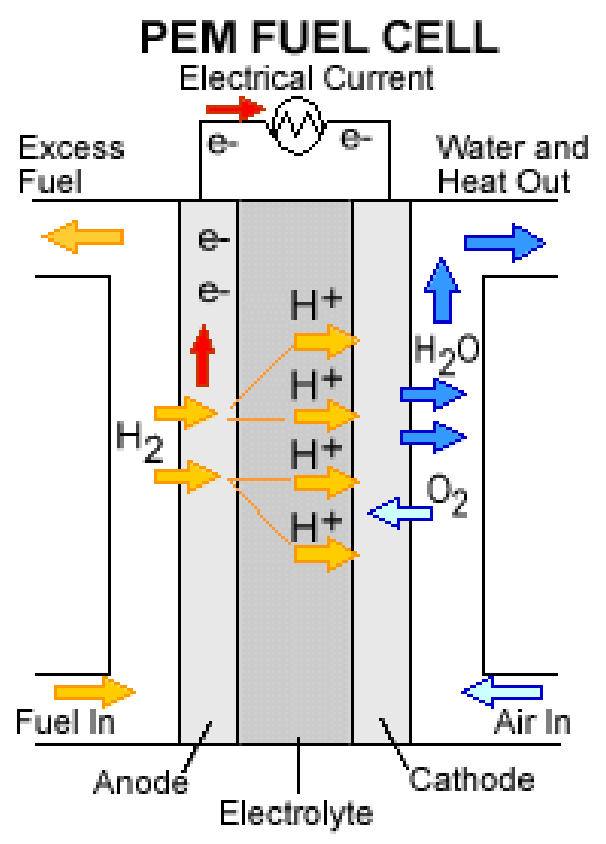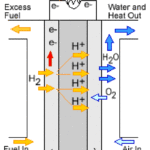Hydrogen fuel cells have the potential to become a viable alternative to traditional gasoline and diesel-powered vehicles in the future. Assessing hydrogen fuel cell technology involves taking into account key factors, including its high cost, competition with electric vehicles, and barriers to widespread market adoption. Moreover, this article discusses the environmental benefits and challenges hindering the commercial implementation of hydrogen fuel cell technology.
High cost of hydrogen fuel cell technology
Hydrogen fuel cells are a promising technology for alternative energy sources. They can supply electricity for both stationary and mobile applications. However, hydrogen fuel cell technology is expensive and requires significant investment to become a viable energy source. The high costs of developing hydrogen fuel cells are a major barrier to its widespread use.
Hydrogen is expensive. It accounts for about half of total production costs. While experts have long predicted that scaled up production and larger electrolyzers will drive down costs, this has not happened. Despite this, industry is rapidly investing in the technology and predicts that capital expenditure will fall by 35-65% over the next decade.
Hydrogen is produced from renewable energy sources to reduce costs. Currently, the cost of renewable hydrogen is around $6/kg. By 2030, hydrogen solutions could be comparable to other low-carbon options. In addition to transportation, hydrogen turbines and boilers could be competitive with other energy sources for heating and cooling.
The price of fuel cells will continue to drop over the next decade. Ballard anticipates fuel cell vehicle prices to drop by 2030. The company says it will achieve this goal by limiting its production volume. With the reduction in cost, the fuel cell technology will be competitive with diesel at the pump in just four to eight years.
Fuel cell cars can carry enough hydrogen fuel to provide three to four hundred miles of range. Currently, most fuel cell technologies use pipeline natural gas as their hydrogen source. Meanwhile, three fuel cells use landfill gas and biogas produced from wastewater treatment. These fuel cells are also more efficient than their gasoline counterparts.
Research is needed to reduce the costs of hydrogen fuel cell technology. Research and government actions are required to make this technology competitive and environmentally-friendly.
Hydrogen fuel cell technology has environmental benefits
Hydrogen fuel cell technology has one of the greatest environmental benefits. It emits no greenhouse gases. This technology emits only heat and water vapor. This makes them safer than other forms alternative energy like wind turbines and fossil fuels. Because hydrogen and oxygen are plentiful, fuel cells are also cheaper than other forms alternative energy.
Using hydrogen as a fuel could have a number of societal benefits. For example, it has very little or no carbon-emitting emissions, and it can be used to reduce the amount of petroleum imported from politically sensitive regions. According to the International Energy Agency (IAEA), the global demand has tripled in hydrogen since 1975. However, most hydrogen produced is made from fossil fuels such as natural gas.
Another important advantage of hydrogen is that it produces no waste. It is clean to produce, and can be derived from biomass, coal, and natural gas. However, it can be costly to extract hydrogen from these sources. The production of hydrogen is dependent on fossil fuels. This means that the carbon dioxide produced in the process negates any environmental benefits. It could also cause the destruction of the ozone layer and contribute to global warming.
The use of hydrogen as a renewable energy source could help to solve the world’s energy crisis. It could be used in a variety of stationary and mobile applications. However, further research and investment in infrastructure are needed to scale up decarbonised hydrogen production. While this technology has the potential to be a major solution for many of the world’s energy problems, it is still a relatively new technology that still faces significant challenges.
Its benefits are therefore gaining international attention. It has the potential to reduce global warming as well as the emissions of conventional fuel vehicles. The United States Department of Energy plans to promote its use, including research into hydrogen and fuel cells.
Threat to electric cars
The hydrogen fuel cell is a promising source of clean energy for cars. However, its proponents are divided over its future. Some see it as a fad and others see its potential as a threat to electric cars. There are also a number of barriers that need to be overcome before it can be viewed as an acceptable solution to the current transportation crisis.
First, hydrogen is very expensive and there is not enough infrastructure to support it. Also, it is not widely distributed and it’s more expensive to transport than natural gas. Adding hydrogen storage to a car could extend its range. Hydrogen cars could coexist with battery electric vehicles in the future, but they aren’t yet ready to go on the market.
The European Union (EU) is pushing a hydrogen program to increase the adoption of electric vehicles. It aims to make fuel cell cars more affordable. This is important for car manufacturers as they need to spend more money on research and development. Moreover, the EU is working towards a mandate that requires all new cars to be battery-powered by 2030. In addition, hydrogen is a greener alternative, and it is likely to become a popular choice for fuel for cars.
While hydrogen is clean, hydrogen fuel cells present a number of risks for the electric car industry. For example, hydrogen is flammable and may pose a fire hazard if improperly handled. For road use, this fuel is also compressed. It is important to consider these potential hazards before making the decision to invest in hydrogen fuel cells for electric vehicles.
However, hydrogen is safer than conventional fuel sources. Because hydrogen and oxygen are not compatible, they can cause a chemical reaction that causes an explosion. However, this reaction is rare in FCEVs since hydrogen is stored in liquid form in thick-walled tanks. Consequently, hydrogen cars are extremely safe, and many crash tests have verified its safety. In addition, hydrogen fuel cells also produce no harmful emissions.
A number of car companies are investing in hydrogen fuel cells, including Toyota and Hyundai. Toyota, for example, is doubling down on production of the Mirai fuel-cell car. In 2021, the company will introduce a new Mirai fuel cell car. This new model is targeted at aspirational buyers.
Barriers to commercial deployment of hydrogen fuel cell technology
While there are many benefits of hydrogen fuel cells, costs are a major hurdle. For commercial deployment, costs need to be reduced and the technology must be proven safe. This technology must be supported by the government through their policies and programs. For example, policies that promote renewable energy and low-carbon electricity may help lower costs and attract private capital to develop hydrogen fuel cell technology. Regulative issues must also be addressed by governments. Without clear regulatory frameworks, commercial projects will struggle to make a financial investment decision.
International cooperation is crucial to accelerate the commercial deployments of hydrogen. This will enable governments to increase their efforts in hydrogen and related technologies in a coordinated fashion, reducing costs, and enabling the sharing best practices. Common international standards will also facilitate trade in hydrogen. These standards should be approved by governments and international organizations, such as the International Energy Agency.
Despite the benefits, hydrogen fuel cells are still expensive compared to other forms of renewable energy. While they are more efficient than solar panels, their high cost is a barrier to widespread deployment. Hydrogen fuel cells require significant amounts of electricity to generate. 3600 TWh is required to produce all your hydrogen output from renewable electricity. A cheaper way to generate electricity for hydrogen fuel cell projects would be to build electrolysers at locations where renewable resources are plentiful, such as wind or solar energy.
Fuel cell technology is a promising solution to energy problems. It is a sustainable and clean alternative to traditional fossil fuels. It is more efficient that conventional combustion power plants which produce electricity at 33-35 percent efficiency. This means hydrogen fuel cell technology can save fuel and improve air quality. In addition, hydrogen doesn’t create greenhouse gases, which is another benefit.
It is essential to develop a safety system for commercial hydrogen fuel cell technology. In addition to the research, DOE should consider the safety aspects of hydrogen technology and consult with independent safety experts. These experts should evaluate the risks associated each system and help determine the best direction of research and development. The DOE should also train local emergency responders in hydrogen safety. Hydrogen cannot be introduced to the market on a large scale without safety training. Safety issues will be a major obstacle to commercial deployment.
Hi, I’m Emma. I’m the Editor in Chief of Tiny House 43, a blog all about tiny houses. While tree houses are often associated with childhood, they can be the perfect adult retreat. They offer a cozy space to relax and unwind, surrounded by nature. And since they’re typically built on stilts or raised platforms, they offer stunning views that traditional homes simply can’t match. If you’re looking for a unique and romantic getaway, a tree house tiny house might just be the perfect option.















